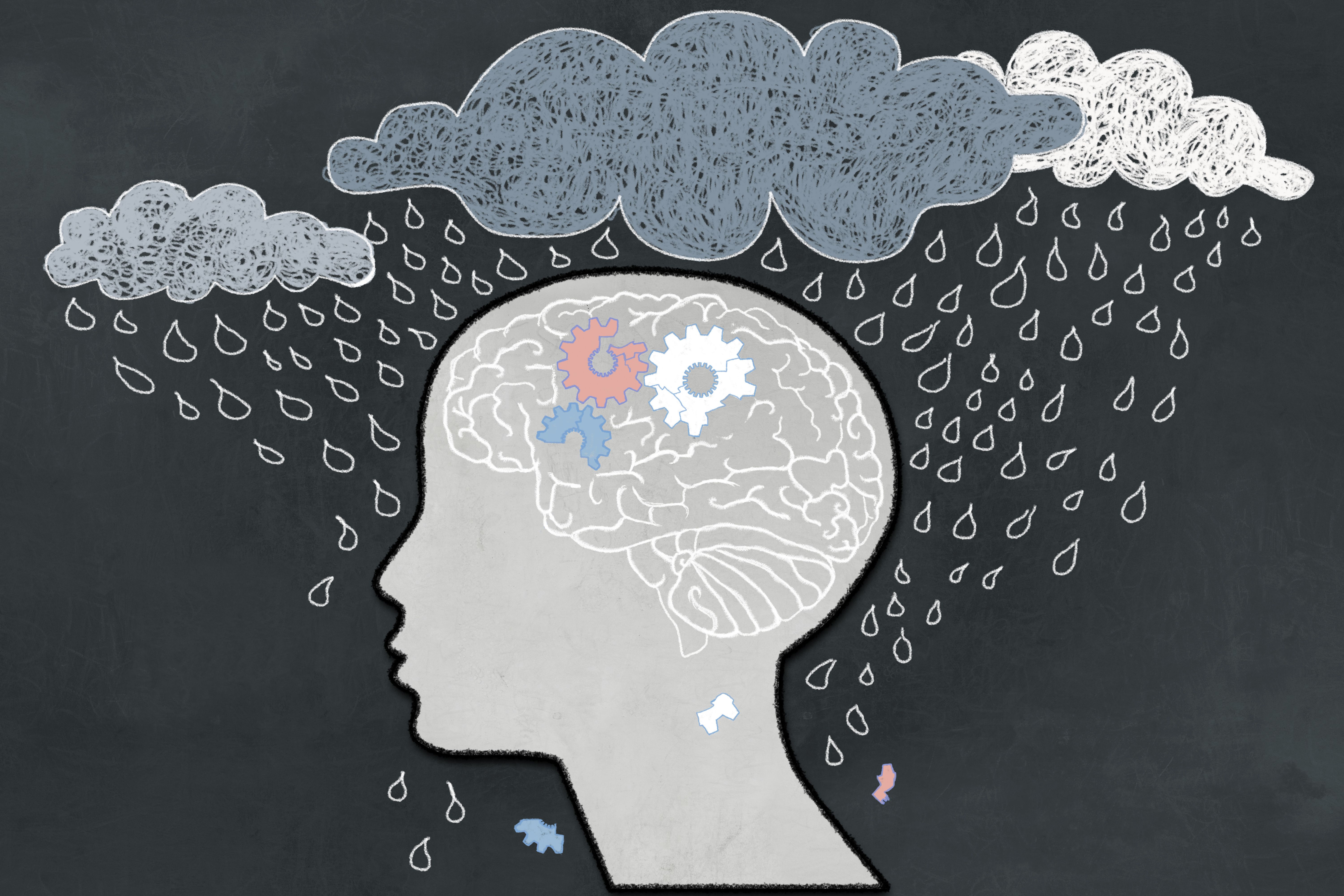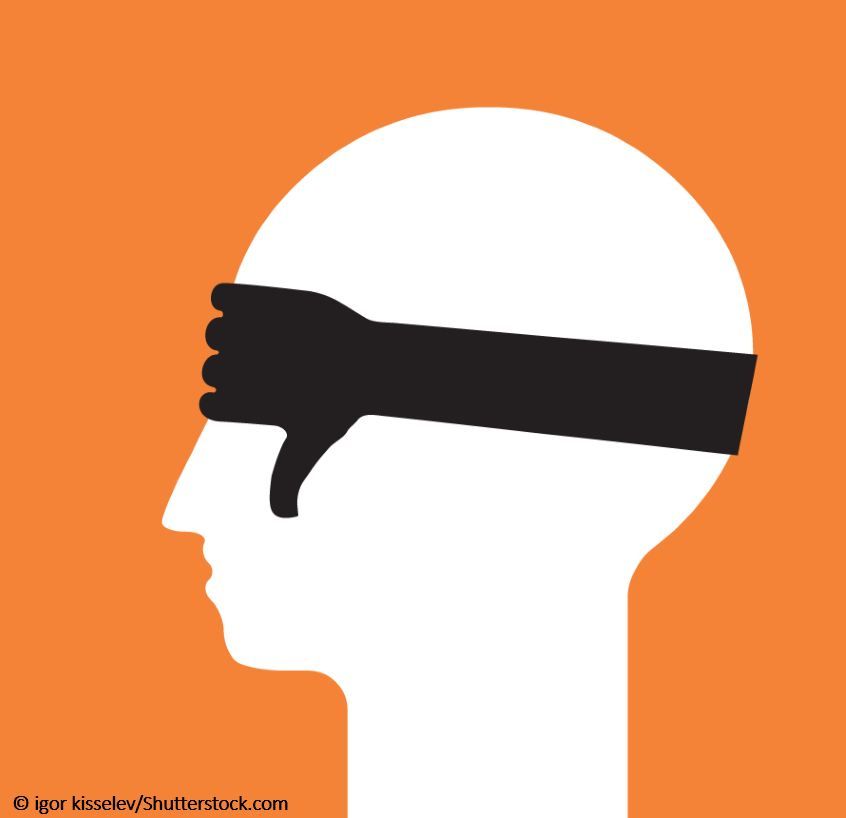Publication
Article
Psychiatric Times
Mental Illness vs Brain Disorders: From Szasz to DSM-5
Author(s):
Thomas Szasz-a psychiatrist-was a lifelong ferocious critic of the institution of psychiatry. A significant body of discourse on the notion of mental disorder by psychiatrists and non-psychiatrists alike has been centered on understanding and responding to his critique.
Despite being a psychiatrist himself, Thomas Szasz was a lifelong ferocious critic of the institution of psychiatry. He attacked its foundations and practices and questioned its medical legitimacy. Although most psychiatrists remain unconvinced of his arguments, Szasz has been very influential by virtue of being psychiatry’s arch-adversary. A significant body of discourse on the notion of mental disorder by psychiatrists and non-psychiatrists alike has been centered on understanding and responding to his critique.
Szasz’s basic contention is that mental illness is a myth. By asserting this, Szasz is not denying the existence of the conditions that psychiatrists call mental illness, or the suffering and distress experienced by people with these conditions. Rather, he is denying the classification of these conditions as medical diseases. For Szasz, diseases are demonstrable anatomical or physiological lesions, and he frequently refers to Virchow’s notion of cellular pathology as the basis of disease. It follows from this particular definition that the only sort of disease that can exist is physical.
By definition, a disease of the mind is impossible. Disease requires a physical lesion; the mind is nonphysical. Ergo, the mind cannot be diseased. This is a logical deduction; the conclusion follows from the premises. This is what Szasz means when he says that this claim is “an analytic truth, not subject to empirical falsification.”1 Because mental disorders are not diseases in the literal, physical sense, they can only be diseases in a metaphorical sense. Mental illness, he says, “is a metaphor. Minds can be ‘sick’ only in the sense that jokes are ‘sick’ or economies are ‘sick.’”2 Psychiatric diagnoses only mimic medical diagnoses.
If the conditions we call mental illnesses are not diseases, then what are they? Szasz argues that they are in fact problems in living, human conflicts, and unwanted behaviors. “Psychiatrists are not concerned with mental illnesses and their treatments. In actual practice they deal with personal, social, and ethical problems in living.”3 (Szasz’s critique of psychiatry extends to a moral and political dimension as well. He argues that the concept of mental illness undermines the principle of personal responsibility, which is the ground on which all free political institutions rest.)
In this lifelong critique of mental illness as a myth, Szasz simultaneously maintained an interesting counterfactual conditional. In logic, a counterfactual conditional is an if-then statement indicating what would be the case if something were true, although it is not true. While insisting that mental illnesses are in reality problems of living and not diseases, he also argued that if the conditions we call mental disorders are found to have an underlying neuropathology, then it would prove that mental disorders are actually brain disorders, and the whole notion of mental illness was erroneous and superfluous to begin with. Szasz did not believe that mental disorders are brain disorders. He alleged until the end of his life that an underlying pathology for psychiatric disorders had not yet been demonstrated, but he was willing to entertain it as a hypothetical possibility. In his 1960 article “The Myth of Mental Illness,” Szasz wrote4:
The assumption is made that some neurological defect, perhaps a very subtle one, will ultimately be found for all the disorders of thinking and behavior. Many contemporary psychiatrists, physicians, and other scientists hold this view. . . .
I have tried to show that for those who regard mental symptoms as signs of brain disease, the concept of mental illness is unnecessary and misleading. For what they mean is that people so labeled suffer from diseases of the brain; and, if that is what they mean, it would seem better for the sake of clarity to say that and not something else.
In 2011, he reiterated this argument5:
When a person hears me say that there is no such thing as mental illness, he is likely to reply: “But I know so-and-so who was diagnosed as mentally ill and turned out to have a brain tumour. In due time, with refinements in medical technology, psychiatrists will be able to show that all mental illnesses are bodily diseases.” This contingency does not falsify my contention that mental illness is a metaphor. It verifies it. The physician who concludes that a person diagnosed with a mental illness suffers from a brain disease discovers that the person was misdiagnosed: he did not have a mental illness, he had an undiagnosed bodily illness. The physician’s erroneous diagnosis is not proof that the term “mental illness” refers to a class of brain diseases.
Such a process of biological discovery has, in fact, characterised some of the history of medicine, one form of “madness” after another being identified as the manifestation of one or another somatic disease, such as beriberi or neurosyphilis. The result of such discoveries is that the illness ceases to be a form of psychopathology and is classified and treated as a form of neuropathology. If all the conditions now called mental illnesses proved to be brain diseases, there would be no need for the notion of mental illness and the term would become devoid of meaning.
One can clearly see some assumptions at work here. For Szasz the notions of mental illness and brain disease are mutually exclusive. A condition can be either a mental illness or a brain disease-it cannot be both; it can have either a psychopathology or a neuropathology-it cannot have both. This exclusivity springs from the fact that for Szasz mental illness is nondisease (disease in only a metaphorical sense) and psychopathology is nonpathology (pathology in only a metaphorical sense). It is a matter of logic that a condition cannot be nondisease and disease (or nonpathology and pathology) at the same time.
Szasz treats the concept of mental illness very literally as being purely a disease of the mind (and thereby an impossibility). This notion harks back to an old and outdated view that was generated from a psychoanalytical outlook of mental illness, which was the dominant psychiatry paradigm in the 1950s, when Szasz came up with his critique. There are 2 ways in which Szasz’s argument goes awry when applied to our current understanding of mental disorders. First, the concept of disease is not restricted to the presence of a physical lesion; second, the term “mental disorder” is now conceptualized in a manner that transcends mind-body dualism.
For the most part, disease is understood largely in terms of suffering and functional impairment, which may or may not be associated with a structural lesion. R. E. Kendell explains this view succinctly6: “For most of human history disease has been essentially an explanatory concept, invoked to account for suffering, incapacity, and premature death in the absence of obvious injury, and suffering and incapacity are still the most fundamental attributes of disease.”
Once we conceive of disease in terms of substantial or enduring states of suffering and incapacity, we are justified in applying it as a label to conditions in which disturbances in cognition, emotion, or behavior are associated with distress and impairment.
The notion of mental illness began to change with the emergence of biological psychiatry. Most psychiatrists today do not believe in the mutual exclusivity of mental illness and brain disorders. Most mental disorders are presumed to have a neurobiological basis even in cases in which this basis is poorly understood. Although the terms “mental illness” and “mental disorder” are still used, the manner in which they are understood is very different from the old psychoanalytic view (and for that reason many psychiatrists argue that the terms should be abandoned). The notion of mental illness as distinct and divorced from the notion of a biological disorder reflects a dualistic understanding of the mind-body relationship, a dualism that has become increasingly untenable given the advances of neuroscience. While it may be true that in the 1950s, when Szasz came up with his critique, this particular dualistic understanding of mental illness was in fashion, psychiatrists have long abandoned such a view. Szasz failed to appreciate that in his critique and held on to his original position until his death in 2012.
We still do not have fully satisfactory definitions of either disease or mental disorder, and I do not attempt to argue that the current conceptualizations are unproblematic. The aim instead is to show that the conceptualizations have changed in a manner such that Szasz’s assumptions are rendered invalid.
To get an idea of how contemporary psychiatry understands mental disorders, let us look at what DSM has to say about it. DSM-IV acknowledges several things. The term “mental disorder” is misleading in the sense that it implies a distinction between mental disorders and physical disorders, reflective of a reductionistic anachronism of mind-body dualism. The distinction between mental and physical is untenable. “Mental disorder” continues to be used because there is no appropriate substitute for it.
“A compelling literature documents that there is much physical in mental disorders and much mental in physical disorders. The problem raised by the term ‘mental disorders’ has been much clearer than its solution, and, unfortunately, the term persists in the title of DSM-IV because we have not found an appropriate substitute.”7
DSM-IV accepts that no definition adequately specifies precise boundaries for the concept of mental disorder. This concept, like many others in medicine and science, lacks a consistent operational definition that covers all situations. Because mental disorders are a heterogenous category of disorders, no single definition captures the entire range of conditions that are currently included in this term. This lack of a precise definition is not restricted to psychiatry but can be found in the rest of medicine as well, where medical conditions are defined in various levels of abstraction.
While acknowledging that no definition can capture all aspects of all disorders currently classified as mental disorders, DSM-5 provides us with a list of minimal criteria that must be met for a condition to be called a mental disorder:
• A mental disorder is a syndrome characterized by clinically significant disturbance in an individual’s cognition, emotion regulation, or behavior that reflects a dysfunction in the psychological, biological, or developmental processes underlying mental functioning
• The condition leads to significant distress and/or disability in social, occupational, or other important activities of daily life
• The condition is not an expectable or culturally approved response to a common stressor or personal loss
• Socially deviant behavior (such as political, religious, or sexual) by itself is not a mental disorder; it can, however, be the symptom of a mental disorder, if it can be shown that the deviant behavior is a part of a clinical syndrome reflective of an underlying dysfunction of mental functioning
• The diagnosis of a mental disorder should have clinical utility; that is, it should assist psychiatrists in developing treatment plans and help them in the determination of expected treatment outcomes and prognoses (however, DSM-5 clarifies that the diagnosis of a mental disorder does not by itself indicate a need for treatment)
Here we can find no trace of the old notion of mental disorder as being purely a disorder of the mind. DSM-5 clearly states that there is a dysfunction in psychological, biological, or developmental processes that underlie mental functioning, thereby cutting right across Szasz’s dichotomy of mental illness versus brain disorders. The DSM definition is not without its problems. For instance, it does not define dysfunction or address the basis of the norms of psychological functioning. Nonetheless, the point here is to show that the concept of mental disorder as it exists in DSM does not assume a distinction between mind and brain that underlies Szasz’s argument.
Mental disorders, as we currently understand them, can very well be brain disorders and, in fact, many of them are. It should be clarified that not all mental disorders have an underlying detectable neuropathology. Many mental disorders, such as most personality disorders, paraphilic disorders, and gambling disorder, are still conceptualized largely in behavioral terms, and they can be said to have an underlying biological basis only in the sense in which all behavior has a biological basis. If all conditions that we call mental disorders had an underlying detectable pathology, Szasz’s criticism would become merely a linguistic complaint against the use of the term “mental disorder” to describe these conditions; however, for many conditions it is difficult to distinguish between their characterization as mental disorders and what Szasz calls “problems of living.”
Does acknowledging that mental disorders often have underlying neuropathology imply that the diagnosis of these conditions as mental illness is in fact erroneous? Consider the case of schizophrenia. Many decades ago, schizophrenia was widely conceptualized as a disorder of the mind with no detectable abnormality in the brain. However, now we know that there are many underlying neurobiological abnormalities.8,9 Simultaneously, our conceptualization of mental disorders has changed such that a biological dysfunction underlying mental functioning is now part of the DSM definition. Schizophrenia remains a mental disorder because it constitutes a clinically significant disturbance in cognition, emotion regulation, and behavior, and the neurobiological abnormalities underlying it remain consistent with its characterization as a mental disorder because the conception of mental disorder has expanded to include biological dysfunction within its scope.
This brings us to the question of the division of psychiatry from the rest of medicine-and neurology in particular. If at least some mental disorders also have underlying neurobiological dysfunction, then why should psychiatry exist as a separate specialty from neurology? This argument assumes that the division between medical specialties, in particular the division between psychiatry and neurology, exists on the basis of the ontological natures of the disorders they treat. This is an erroneous assumption. There need not be any ontological difference between neurological diseases and psychiatric diseases, in the sense that both depend on the brain as a necessary and sufficient condition for their existence.
There is a significant overlap between the conditions treated by neurology and psychiatry, as evidenced by the subspecialty of neuropsychiatry. The justification for the existence of psychiatry as a separate specialty is not based on an understanding of what constitutes mental illness. Rather, the justification is based on the clinical nature of disorders (psychiatric disorders are predominantly disorders of behavior, cognition, and emotional regulation) and the requirement of specialized skills for treatment (eg, psychotherapeutic techniques, psychopharmacology, ECT), among other considerations.
Robert Daly writes10:
[I]ndeed, psychiatrists and neurologists have a common interest in some kinds of cases, as expressed in the subspecialties of neuropsychiatry and behavioral neurology. But for the most part, neurology and psychiatry respond to different kinds of ill health and therefore exhibit different practical aims that require the acquisition and competent exercise of different practical skills. Each discipline also proceeds from a different body of theoretical knowledge and speaks the generic vocabulary of medicine in different voices.
By all means, a debate is warranted on how valid these justifications are for the separate existence of psychiatry from neurology-and it is an ongoing debate-but what needs to be recognized is that psychiatry as a specialty is no longer distinguished from neurology on the basis of the absence of determinable neuropathology underlying the conditions of interest.
Disclosures:
Dr Aftab is Resident in Psychiatry at the Hamad Medical Corporation in Qatar; he is a graduate of King Edward Medical University in Lahore, Pakistan. He reports no conflicts of interest concerning the subject matter of this article.
References:
1. Szasz TS. Preface: the myth of mental illness: foundations of a theory of personal conduct. Fifty Years After The Myth of Mental Illness. 50th anniversary ed. New York: Harper Perennial; 2010:xii.
2. Szasz TS. Summary: the myth of mental illness: foundations of a theory of personal conduct. Fifty Years After The Myth of Mental Illness. 50th anniversary ed. New York: Harper Perennial; 2010:267.
3. Szasz TS. Conclusion: the myth of mental illness: foundations of a theory of personal conduct. Fifty Years After The Myth of Mental Illness. 50th anniversary ed. New York: Harper Perennial; 2010:262.
4. Szasz TS. The myth of mental illness. Am Psychol. 1960;15:113-118.
5. Szasz T. The myth of mental illness: 50 years later. Psychiatrist. 2011;35:179-182.
6. Kendell RE. The myth of mental illness. In: Schale JA, ed. Szasz Under Fire: A Psychiatric Abolitionist Faces His Critics. Chicago: Open Court; 2004:31.
7. American Psychiatric Association. Introduction. In: Diagnostic and Statistical Manual of Mental Disorders. 4th ed, text rev. Washington, DC: American Psychiatric Publishing; 2000.
8. Howes OD, Fusar-Poli P, Bloomfield M, et al. From the prodrome to chronic schizophrenia: the neurobiology underlying psychotic symptoms and cognitive impairments. Curr Pharm Des. 2012;18:459-465.
9. Falkai P. SOA04-01-Update on pathophysiology of schizophrenia. Eur Psychiatry. 2012;27(suppl 1):1.
10. Pies R, Daly R. Should psychiatry and neurology merge as a single discipline? Psychiatric Times. March 2010. http://www.psychiatrictimes.com/articles/should-psychiatry-and-neurology-merge-single-discipline. Accessed January 22, 2014.





